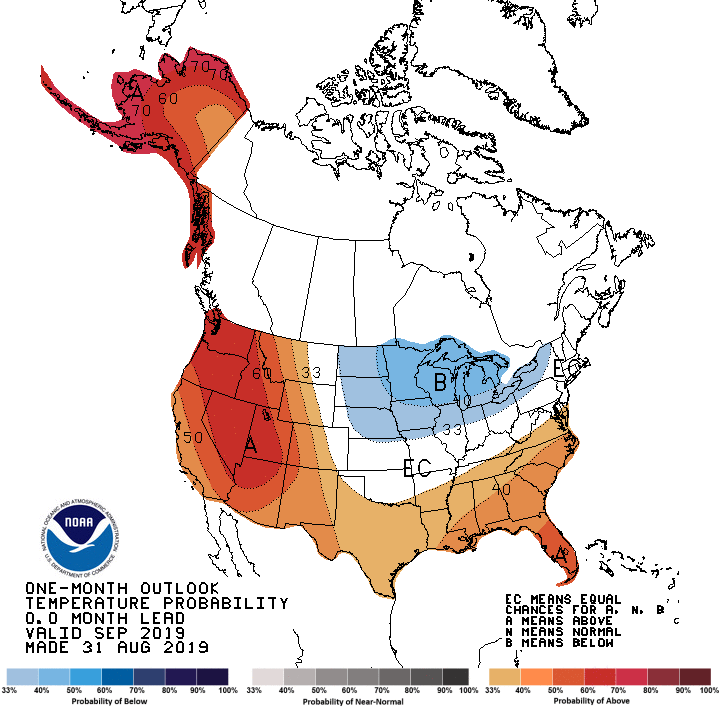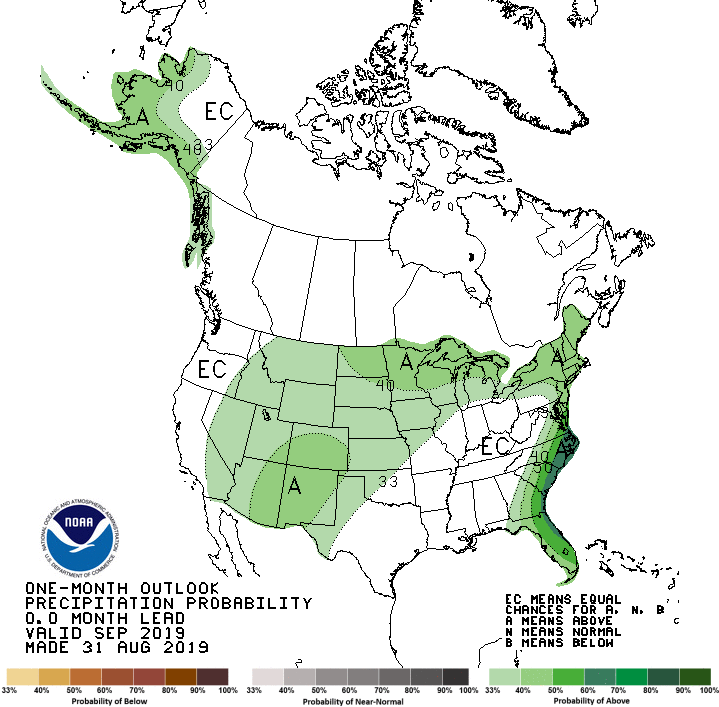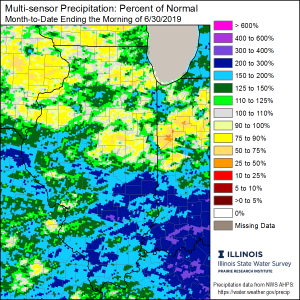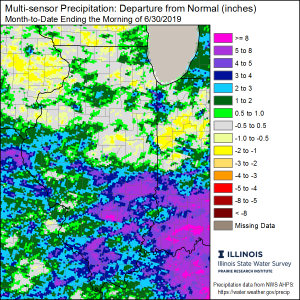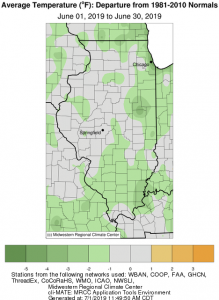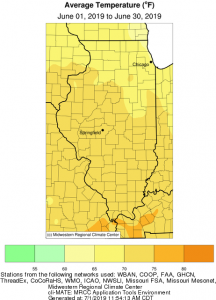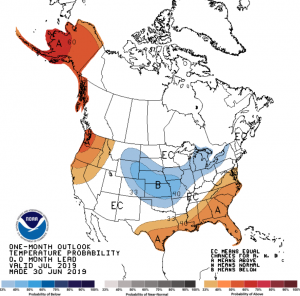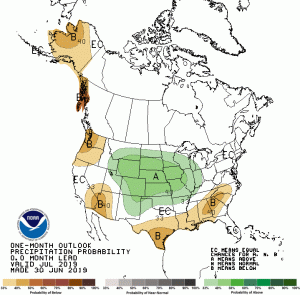This past month was tied for the 4th warmest September for Illinois (state average temperatures back to 1895), and the warmest September since 1933. Precipitation varied tremendously from north to south across the state.
Preliminary data suggest that September was tied for the 4th warmest on record for Illinois. The preliminary average statewide September temperature was 71.3 degrees, which is 4.9 degrees above the long-term average. Monthly temperatures ranged from 2 to 4 degrees warmer than normal in northeast Illinois to over 6 degrees warmer than normal in southwest Illinois. The preliminary average statewide precipitation was 5.34 inches, which is 1.9 inches above the long-term September average. However, the data also show large differences in September precipitation totals across the state, with northern Illinois receiving much more than average precipitation, and southern Illinois receiving much less than average.
Data are provisional and may change slightly over time.
Precipitation, Flooding, & Drought
September precipitation totals reveal a strong north-to-south gradient. Areas of northern and north-central Illinois received in excess of 12 inches of rainfall in September, while areas of southeast Illinois received less than 0.25 inches over the same time period (see maps below). Expressed as a percent of normal September precipitation, these totals ranged from 300 percent of normal in northern Illinois to less than 5 percent of normal in southeast Illinois. Locally, a station near Stockton (Jo Daviess County) observed 16.62 inches in September (nearly 13 inches more than normal), while the station at Smithland Lock & Dam (Pope County) recorded only 0.02 inches (3.5 inches less than normal).
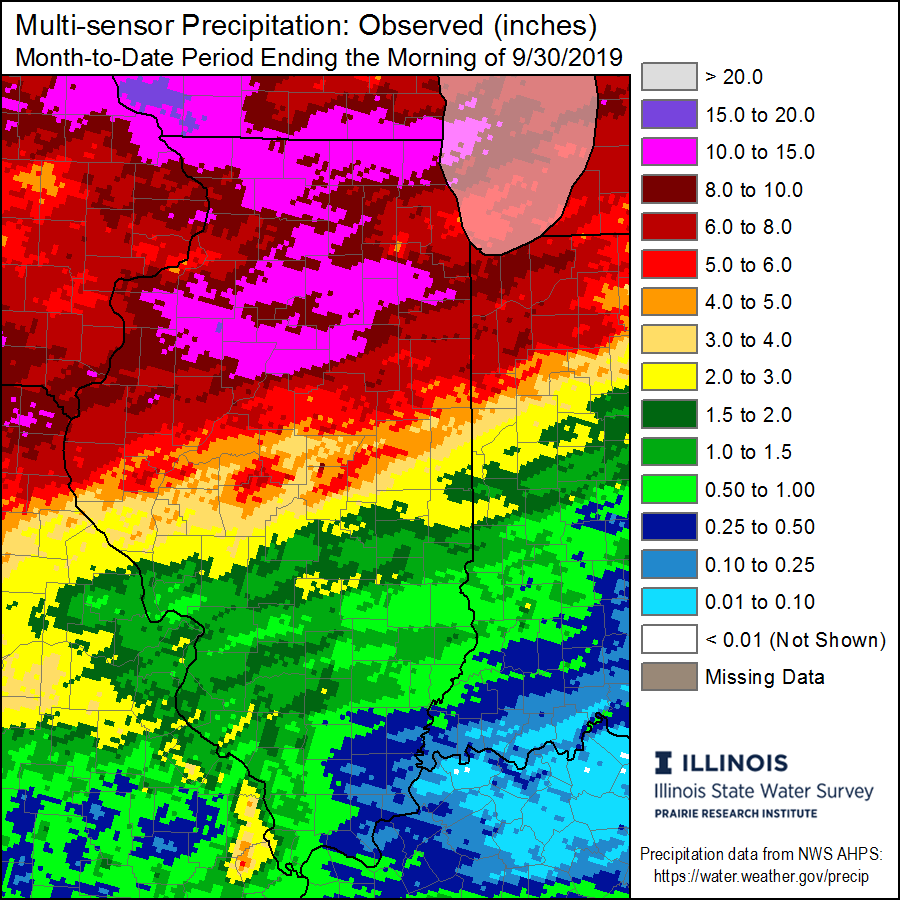
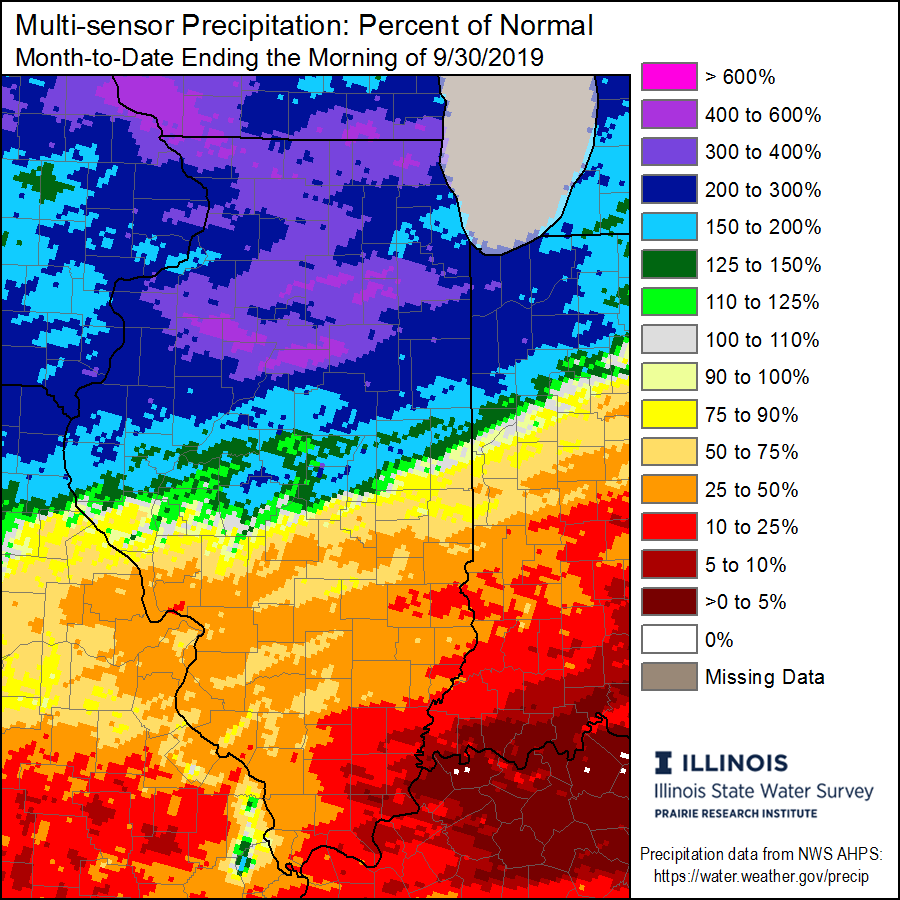
August 2019 was the first months since September 2018 during which the U.S. Drought Monitor identified drought in the state. In September, dryness in east-central Illinois persisted but did not intensify. The latest U.S. Drought Monitor map (September 24) shows a pocket of moderate drought covering parts of Champaign, Ford, Iroquois, and Vermilion counties (see map below). Concurrently, below normal rainfall and above normal temperatures in the southern part of the state produced dryness in September. The latest U.S. Drought Monitor depicts abnormally dry conditions for most of Illinois south of I-64, and a pocket of moderate drought from Pope and Hardin counties in the southeast to Perry and Franklin counties in south-central Illinois. Conditions in southern Illinois have shown some signals of a flash drought, which is a rapidly intensifying drought event, often provoked by existing precipitation deficit combined with intense heat.
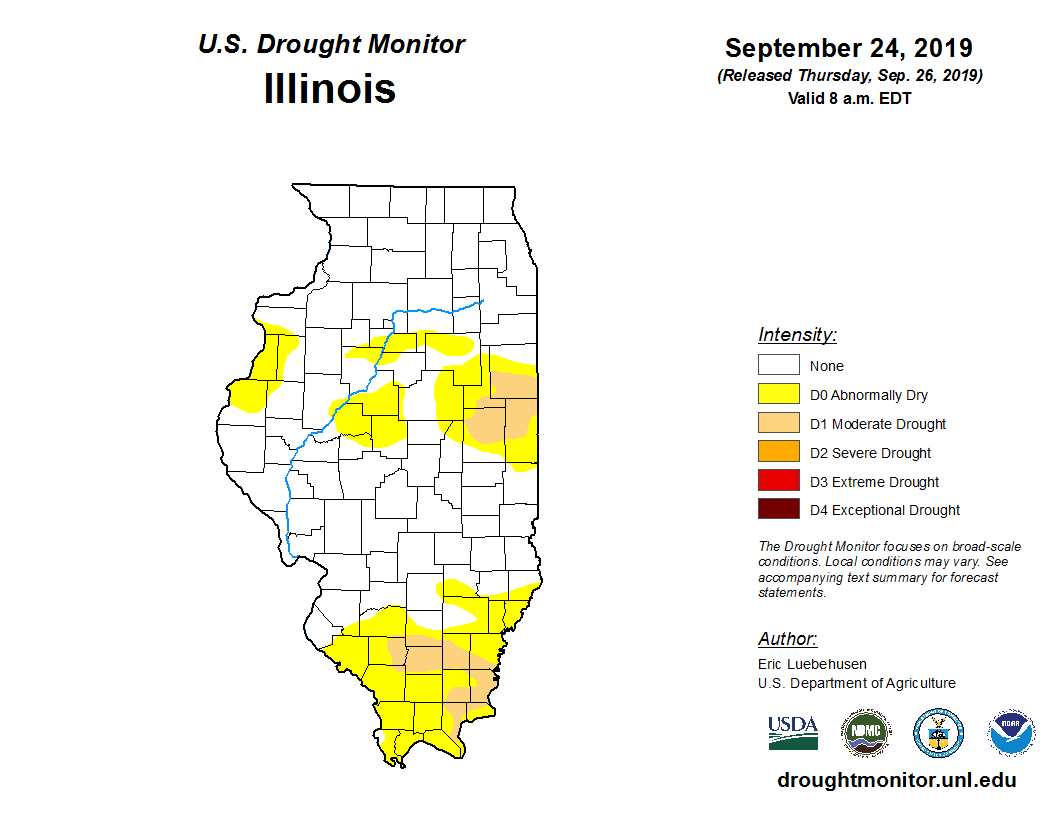
Reports from Illinois Farm Bureau CropWatchers regarding drought in east-central and southern Illinois are mixed. Some report the dryness and heat have helped late-planted crops reach maturity, while at the same time possibly sacrificing yield. The recent National Weather Service 7-day precipitation forecast calls for 1 to 4 inches of rain in the northern half of the state, with 7-day forecasted totals less than 0.5 inches in southern Illinois (see map below).
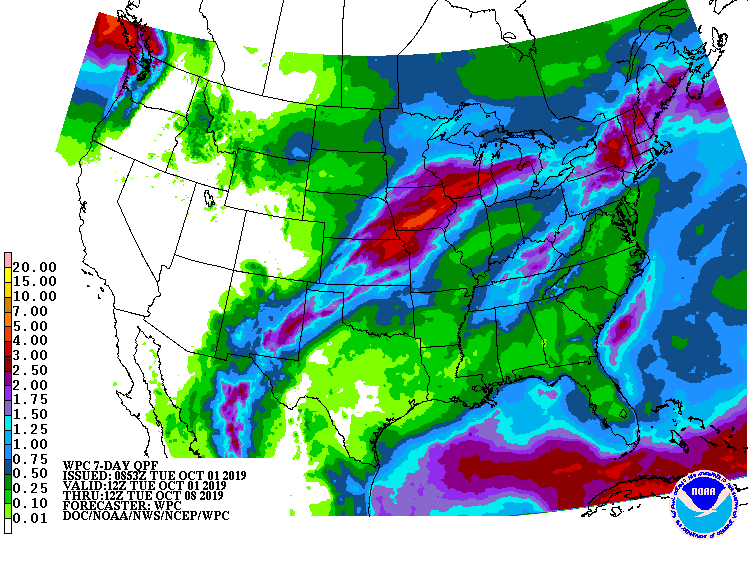
In contrast to the ongoing drought in southern and east-central Illinois, September was abnormally wet for most of northern and north-central Illinois. Persistent, heavy rains led to flooding impacts in parts of northern Illinois, including the closure of several state parks and significant flooding along the Fox and Des Plaines Rivers, among others. Areas in northern and north-central Illinois received in excess of 12 inches of rainfall in September. In most parts of Peoria, Woodford, Marshall, and Livingston Counties, most of the rainfall totals came in a 24-hour period between September 27 and 28. This event created dangerous flash flooding from Peoria into the southwest Chicago suburbs.
The COOP station in Minonk, Illinois (Woodford County) recorded 9.09 inches of rainfall over that 24-hour period, although that likely fell over a less than 12-hour window. This total approached the 24-hour, 500-year storm total of 9.53 inches and surpassed the 12-hour, 500-year storm total of 8.29 inches. A 500-year storm total refers to a precipitation accumulation over a given time period (e.g., 12, 24, 48 hours, etc.) and has a 0.2 percent chance of occurring in a given year. Impressively, the 9.09-inch total in Minonk broke, and nearly doubled, the all-time 24-hour precipitation total record at that station, which was just over 5 inches (data going back to 1895). Images of flooded fields in Woodford and Marshall Counties suggest this most recent heavy precipitation event may delay harvest.
Temperature
The September temperature was much more consistent across the state than precipitation, as the entire state experienced above normal temperatures this month (see maps below). Apart from the last full week in September, most of the state has been under the influence of a large high-pressure system this month, centered to our southeast. This system has allowed warm air to intrude from the south/southwest, generating warmer than normal conditions for this time of the year. In fact, the statewide September average temperature was 71.3 degrees, tying it for the 4th warmest September on record in Illinois (back to 1895). September average temperatures across the state ranged from 65 degrees in Jo Daviess County to 78 degrees in Lawrence County. The lowest minimum temperature reported in Illinois in September was 45 degrees in Jo Daviess County on September 5, and the highest maximum temperature reported in Illinois was 97 degrees in both Alexander and Pope Counties on September 16. Well over 100 local daily climate records were broken in Illinois in September, most of which were high daily minimum temperature records. This is attributed to several very warm nights, including the night of September 22, when the nighttime minimum temperature remained above 70 degrees as far north as Elizabeth (Jo Daviess County) and Freeport (Stephenson County). On the night of September 10, the station in Rock Island reported a nighttime minimum temperature of 77 degrees, besting the previous daily record by 3 degrees.
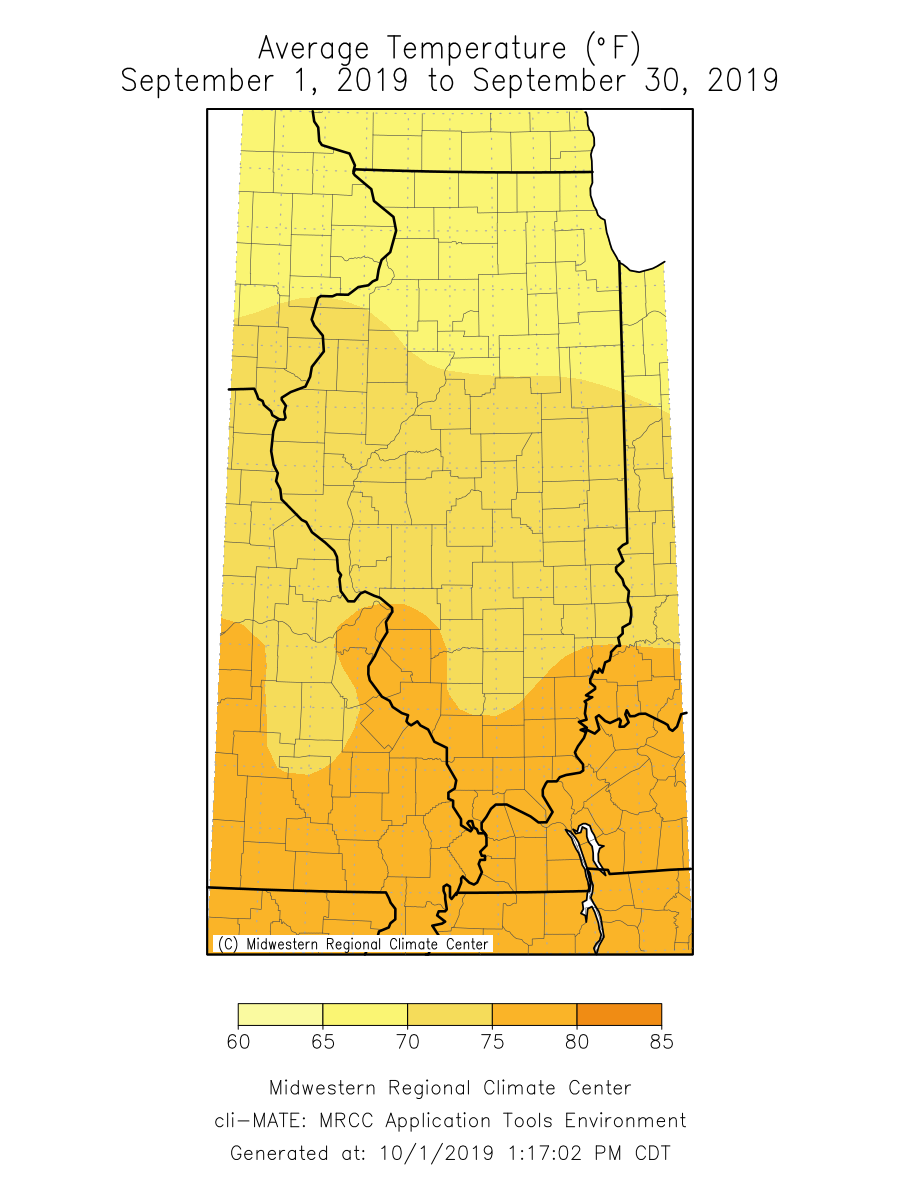
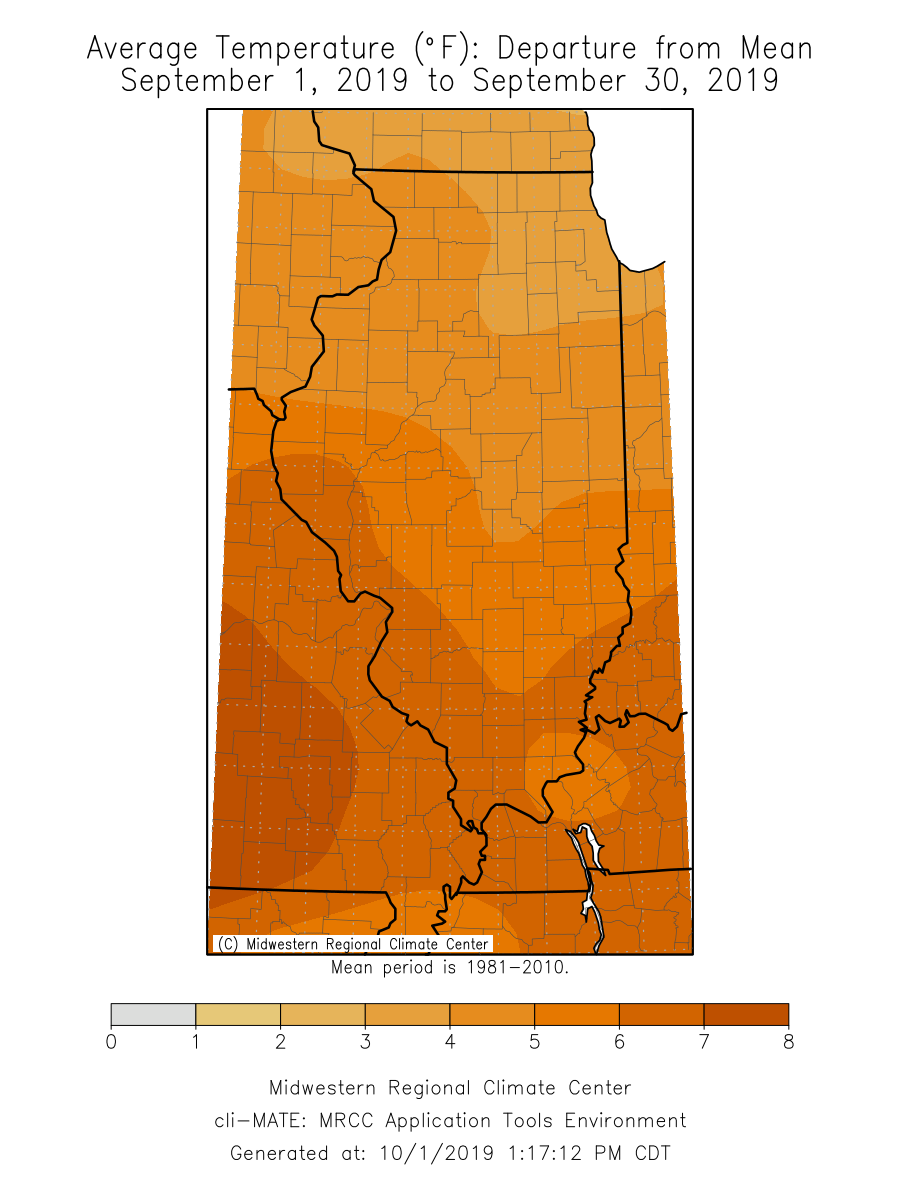
Short-term temperature forecasts call for continued above average temperatures for the first few days of October and then a regression to cooler, more seasonal conditions. Longer term Climate Forecast System (CFS) forecasts from the National Centers for Environmental Protection show probabilities of a 32-degree freeze in Illinois remain below 30 percent into the third week of October. The map below shows the probability of a daily minimum temperature below 32 degrees between October 14th and October 21st.
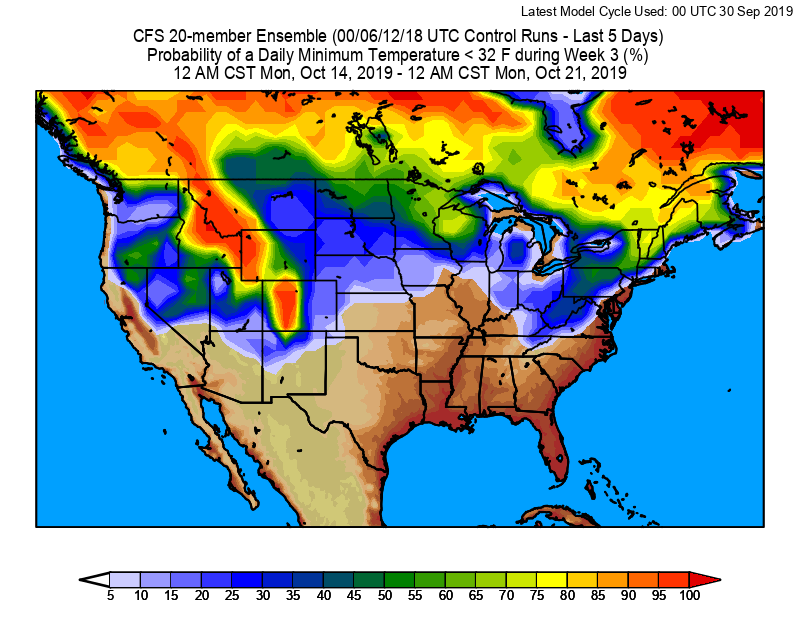
October 2019 Outlook
Looking into October, the 8 to14-day outlook from the Climate Prediction Center (CPC) shows elevated probabilities of above normal temperatures and elevated probabilities of above normal precipitation across the state.
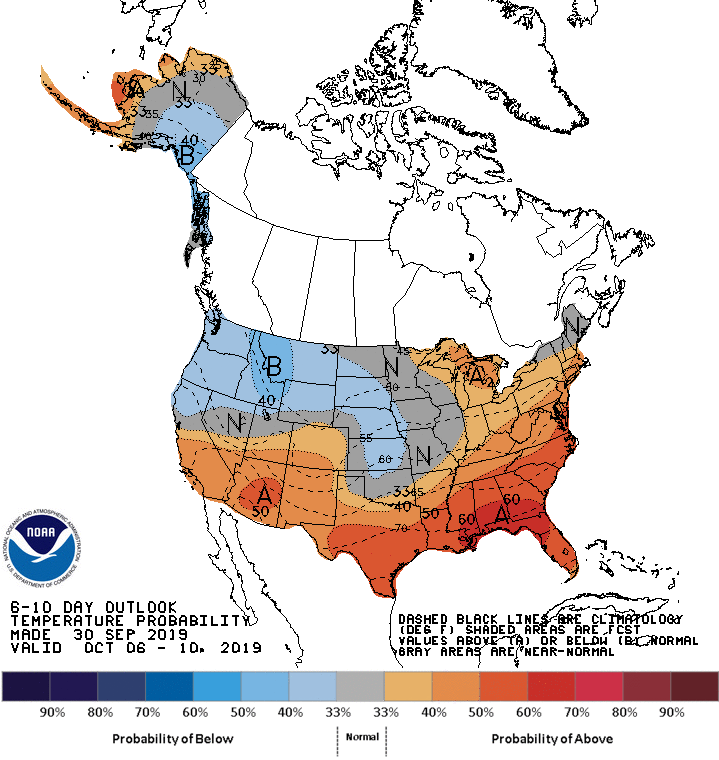
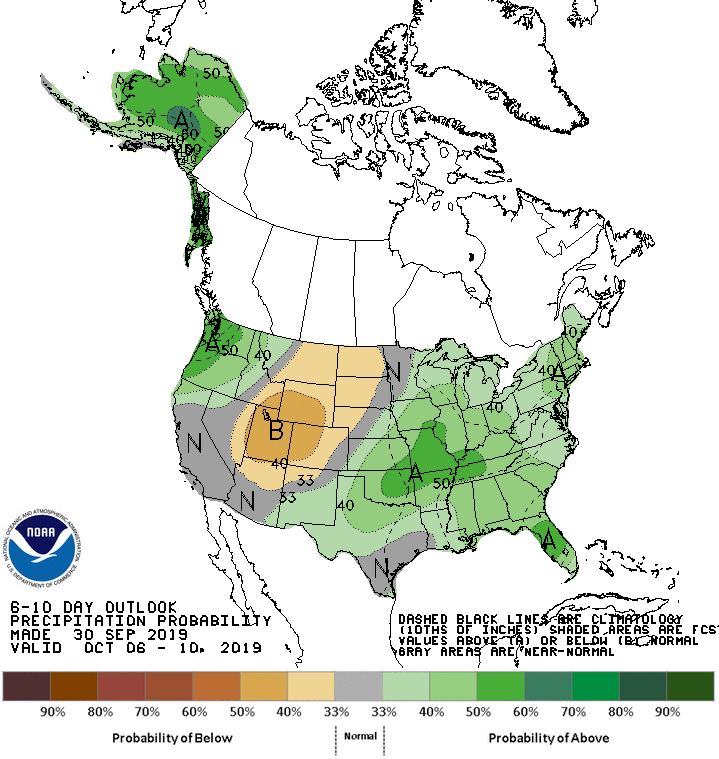
The CPC monthly outlook for October still shows elevated probabilities for below normal temperatures across the northern half of the state, with equal chances (above normal, normal, below normal precipitation) for all but the very northwest corner of Illinois (see maps below).
